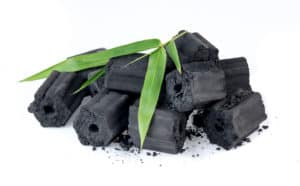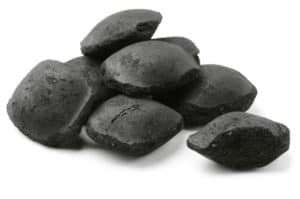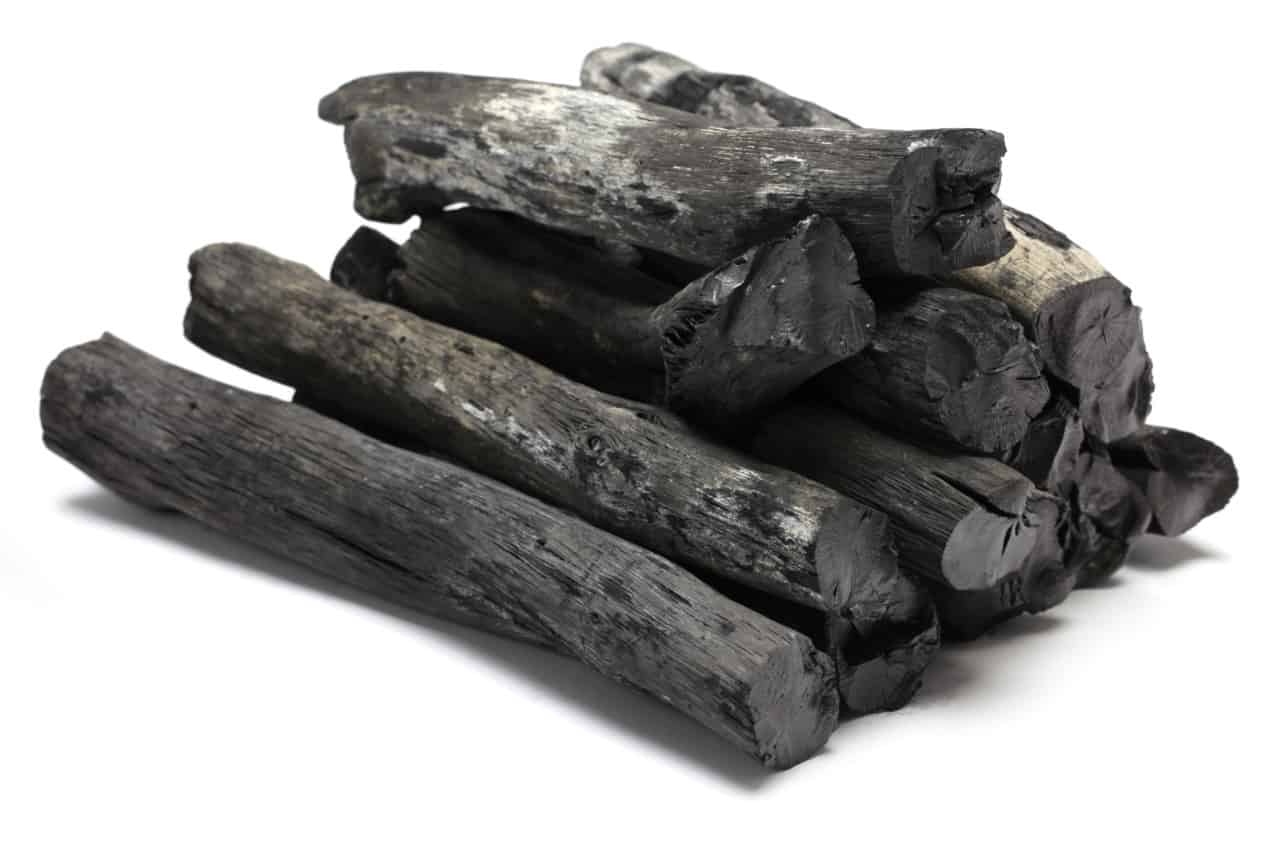
I recently went to my local home improvement store to pick up some charcoal for my grill. I noticed there are a lot more options there than there used to be. That got me wondering what is the best charcoal for grilling. Is there even really a difference? So I decided to do some research and see what all the hype is about and here’s what I found.
There’s been lots of debate on what the best grilling charcoal is. I believe 100% all natural briquettes are the best. Briquettes have a lot to offer and are typically made from sawdust that comes from lumber mills. They have a uniform shape that gives you an even heat when grilling.
The two most commonly used charcoals, at least in the United States, are briquettes, which we just talked about, and lump charcoal. Lump charcoal is sometimes called natural charcoal. There are other types as well that are just not commonly used in the states. So what are they, and is there a big difference? Here’s a quick overlook before I go into more detail.
- Binchotan Charcoal which is sometimes called white charcoal or binchō-zumi which comes from Japan. It’s widely regarded for being able to produce extreme heat, and having a high carbon content.
- Coconut Shell charcoal is made from discarded coconut shells – yet another charcoal made from recycled products. This may be the most environmentally friendly charcoal because it’s pure waste product. It is also known for its ability to make extremely high heat.
- Thai Charcoal is well known for its extremely long burning time. In fact some people even extinguish them and reuse them next time they grill.
So why are there so many different types of charcoal? It’s actually pretty simple. They all come from different parts of the world. Like many things different cultures like to do things in different ways. It was actually really educational learning about all the other types of charcoal and how they’re made. So to save time for anyone else wanting to know some more about charcoal, here’s what I’ve learned about charcoal from around the world.
Charcoal
So like I said above, when you go to the store to pick up charcoal to grill with, you’re probably used to seeing these first two types. You’ve definitely seen briquettes – they seem to be sold everywhere. Depending on where you’re shopping you’ve more than likely seen lump charcoal as well. They’re identical in how you’re going to use them for cooking, but the manufacturing of them is done in two different ways. Also, both burn in very different ways due to how they were made.
No matter which charcoal you choose or where in the world it comes from, it started out as wood. But I’m sure you’ve noticed not all charcoal look a lot like wood. That’s because it’s been cooked in a low oxygen environment at high heat to reduce it down to almost pure carbon. So let’s take a look at each type individually to help better understand how they were made and the differences in them.
Briquettes


So once again most briquettes are made from sawdust. But there are other ingredients in them like anthracite coal, lime, and cornstarch. That might seem like a lot, but in reality compared to some other things we use, that’s not that many ingredients.
The fact that it’s a manufactured product guarantees you a uniformed shape. The fact that it’s a uniformed shape gives you an even burn. So you don’t have to worry about cold spots when cooking with it, which is something other types of charcoals can’t offer you.
The main ingredient, sawdust, is actually recycled from lumber mills. So it’s otherwise a waste product if you don’t make briquettes from it. Early briquettes were actually first made from wood scraps that came from the Ford’s Model T assembly line to help minimize the waste. That’s back when cars still had wood rim wheels. There was a lot of sawdust made when they turn the spokes for the inside of the rim.
The anthracite coal helps make it burn longer and hotter. This way you don’t have to always be tending to your charcoals or have them burn out in the middle of a barbecue. The lime is added to make it turn white when it’s fully lit. This is to help indicate that is ready to be cooked on. And lastly the cornstarch acts as an adhesive to help them stay together, giving you that square shape we’re all used to seeing.
These days you can get briquettes that will help add flavor to your food. If you’re looking to get that smoky taste without all the work of smoking your food or if you don’t have a smoker, you can just buy briquettes that will give your food the flavor that wood would add. They come in all the same flavors of woods that people commonly use for smoking meats.
- Hickory
- Apple
- Pecan
- Cherry
- Mesquite
Something else you might not have noticed about briquettes is that they have grooves on the top and bottom of them. This is done to optimize airflow while you’re using them in your grill. It helps give you an even burning bed of charcoals that will give you that even heat I talked about earlier. It helps make grilling anything easy.
Now it’s only fair to let you know some companies do put other additives in their briquettes. So I recommend reading the label before you buy any briquetes. Remember the fumes coming off your charcoal can and most likely will affect the taste of your food.
Lastly you should never use match-light or instant light briquettes. These briquettes have been heavily soaked in lighter fluid and other chemicals to make them easy to light. If you don’t wait long enough before adding your food to grill it will completely ruin the taste of your food. I don’t know about you, but I never want to add chemicals into my food. Not to mention if you know how to light charcoal, it’s not that difficult to do.
Lump / Natural Charcoal
Lump or natural charcoal is typically made from end cuts of wood from lumber mills or recycled construction material. Unlike briquettes, there’s no additives in lump charcoal. It’s just hardwood that’s been cooked down to carbon. That’s why it still looks like burnt pieces of wood. It’s known for burning hotter than briquettes, leaving little to no ash. Lump charcoal tends to be the go-to for large BBQ pit masters.
Make sure if your going to use lump charcoal, it is made from end cuts. End cuts are just the round parts of the trees that can be made into lumber. If it’s made from recycled construction materials, take a good look at it before you use it. I’ve read about people finding computer parts and other things in their bag of charcoal. That’s just not something I want to be cooking with.
Some problems with lump charcoal is that it’s all different sizes and shapes. So that means it’s going to burn at different rates. So some spots on your grill might get hotter than others. It also burns fast so you my need to use more lump charcoal than if you had used briquettes. That can be frustrating since lump charcoal tends to cost more than briquettes.
Lastly, the uneven shape of lump charcoal makes me wonder if every piece has been cooked to its full potential to get you the most carbon content that you can. It would seem to me that being uneven shapes, some pieces might be cooked to the point where they are useless, others may not be fully carbonized in the middle.
Lesser Known Charcoal
Now you know all about the more common types of charcoal. But what about the lesser known charcoals? We are looking for the best charcoal for grilling. So let’s look at some lesser known charcoal. Like I said above, there are more types of charcoal then you might think.
Binchotan Charcoal


Binchotan charcoal comes from Japan. This charcoal is sometimes called white charcoal or binchō-zumi. It’s mainly produced in the Wakayama Prefecture of Japan and is made from their official tree.
Binchotan charcoal is made from a type of oak tree called Ubame Oak or Ubame Kashi which is denser than traditional oak trees. This charcoal dates all the way back to the Edo period. If you’re like me and have no idea when that was, it was the 17th century.
Binchotan is made much like lump charcoals. But instead of being end cuts, they use small diameter pieces of wood. This makes it retain the look of the wood after its been cooked down. There is one additional step called Seiren or Refining.
In the seiren process, the binchotan maker opens the door of the kiln and lets more air into it. This makes the temperature in the kiln go up and get close to 1000F. They must be careful while doing this – if they let too much air in too quick, the charcoal will burn up and leave the maker with nothing but ash. Due to this additional step, binchotan charcoal is around 95%, if not more, pure carbon.
The high carbon content in binchotan makes it a bit harder to light, but it also makes it burn hotter and longer than other charcoals. Binchotan is known for being able to burn for up to 6 hours while keeping a good cooking temp.
Coconut shell charcoal
Coconut shell charcoal is made from – I’m sure you guessed it – coconut shells. It’s made in much the same way as the charcoal briquettes. Much like briquettes, coconut shell charcoal is made from a waste product. But unlike regular briquettes, no trees need to be cut down to make coconut charcoal. It’s extremely environmentally-friendly since there’s no deforestation in the manufacturing of it.
Typically you’ll see coconut charcoal pressed into cubes or log shapes. I have not gotten the chance to use this yet. But reports are that it burns hotter and longer than briquettes – around 800F. Some claim that 1 pound of coconut charcoal is equals a 2 lb of briquettes. It also produces very little ash, and the ash that is produced can be recycled into fertilizer.
Most people say there’s very little smoke that comes off the coconut charcoal as well. I’ve been told coconut charcoal makes your food taste more like it was cooked over a wood fire and not with charcoal. So if you can get your hands on coconut charcoal, it might be worth giving it a try.
Thai charcoal



Thai-Style log charcoal is a long burning, clean, and natural charcoal. It is made sustainably from orchard grown rambutan fruit wood, which imparts a very mild flavor to your food. Try it and let your grilled food speak for itself. Thai charcoal makes an even heat and is easy to cook with. It’s great for any style of solid fuel cooking, grilling, barbecue, indirect cooking, and particularly good where binchotan charcoal is traditionally used.
Thai charcoal does take a bit longer to light then most other charcoals. Even with a chimney starter it can take 30 minutes or longer to get it lit. But it is more versatile. It can give you a high heat or low heat once you’re familiar with using it. It’s ideal if your using an egg style cooker for low and slow cooking. Once you get your temp set, you won’t have to mess with the charcoal for 3 to 4 hours.
Thai charcoal is also odorless and burns with very little to no smoke. This is another one that produces very little ash. Although availability may be a problem, I know I have ordered it from Amazon. There are no stores, at least that I’ve found around me, that sell it.
Conclusion
Like I mentioned in the beginning of this article, I feel briquettes are the best type of charcoal. I feel that way because they’re readily available. I’ve never had to look hard to find briquettes. Just about every store and gas station sell them.
As long as you stick with 100% natural, there’s no unnecessary chemicals added to them. They provide good airflow and are easy to control your temperature. They even come in a wide variety of flavors. Briquettes might not be for your competitive barbecues, but for your weekend warriors who just want to have a good time in the backyard, briquettes are definitely the way to go.
If you really wanted to, you could say that Coconut charcoal and Thai charcoal are technically briquettes. They are very similar to them; however, when briquettes are manufactured, they are compressed into a log shape or a cube shape. So they’re 100% all natural briquettes.
As Always, Happy Grilling
